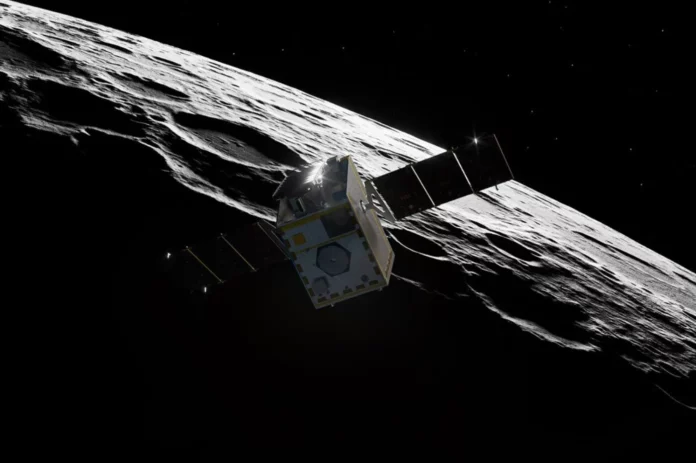NASA‘s Lunar Trailblazer lunar rover is officially in Florida and integrated with a SpaceX Falcon 9 rocket in anticipation of its launch into space later this month.
The small satellite is scheduled to launch no earlier than February 26 from the Kennedy Space Center, with the ultimate goal of reaching lunar orbit and fully assessing the water content of our planet’s rocky moon. Water molecules exist on the sunlit surface of the moon, but water is lost in space, raising the still-open question of how water on the lunar surface is replenished. Lunar Trailblazer may provide answers to these questions.
NASA’s Jet Propulsion Laboratory described the complex maneuver that will allow Trailblazer to enter lunar orbit in a press release issued this week.
The Lunar Trailblazer will separate from its rocket about 48 minutes after launch and head to the moon for at least a two-year mission.
Trailblazer is equipped with two instruments. One is the High Resolution Lunar Mapping Instrument (HVM3), and the other is the Lunar Thermal Mapper (LTM) infrared multispectral thermal imager. The first will map minerals and water on the lunar surface, including substances in its craters, whose shadows cover their bottoms in the dark and whose depths are potential harbors for water ice. LTM will also map minerals as well as the thermal properties of the Moon’s surface.
“The LTM instrument accurately maps the lunar surface temperature, while the HVM3 instrument looks for the spectral signature of water molecules,” said Neil Bowles, LTM instrument scientist at the University of Oxford, in a previous JPL release. “Both instruments will allow us to understand how surface temperature affects water, improving our knowledge of the presence and distribution of these molecules on the Moon.”
The spacecraft weighs only 440 pounds (200 kilograms) and measures 11.5 feet (3.5 meters) across when its solar panels are fully deployed.
“Unlike conventional small missions that can only have a very focused, single objective, Lunar Trailblazer has two high-precision instruments on board,” said Andy Klesh, Trailblazer project systems engineer at JPL, in a new release. “We’re really working on what we can do.”
The spacecraft will take four to seven months to reach the moon, depending on the launch date; regardless of that date, the mission will use gravity support to reach the moon.
After the launch, the mission will perform two corrective maneuvers and a mid-course correction before the flybys scheduled for March 3 and May 8. The team plans to launch the vehicle into lunar orbit on July 7.
“The initial momentum provided by the rocket will propel the spacecraft past the Moon into outer space, and its trajectory will be naturally altered by gravity after several passes by the Moon and circling the Earth. This will allow it to enter lunar orbit with minimal energy expenditure,” said Gregory Lantoine, JPL’s mission design and navigation manager, in the same release. “It’s the most efficient way to get where we need to go.”
The spacecraft’s final orbital position will be about 60 miles (100 kilometers) above the lunar surface. Trailblazer will orbit the moon 12 times a day, observing the satellite’s surface at different times of the day during its daily rotation.
Ultimately, Lunar Trailblazer’s data will help scientists better understand the lunar surface and better prepare NASA for future Artemis missions, which aim to return humans to the lunar surface for the first time since the Apollo missions.









